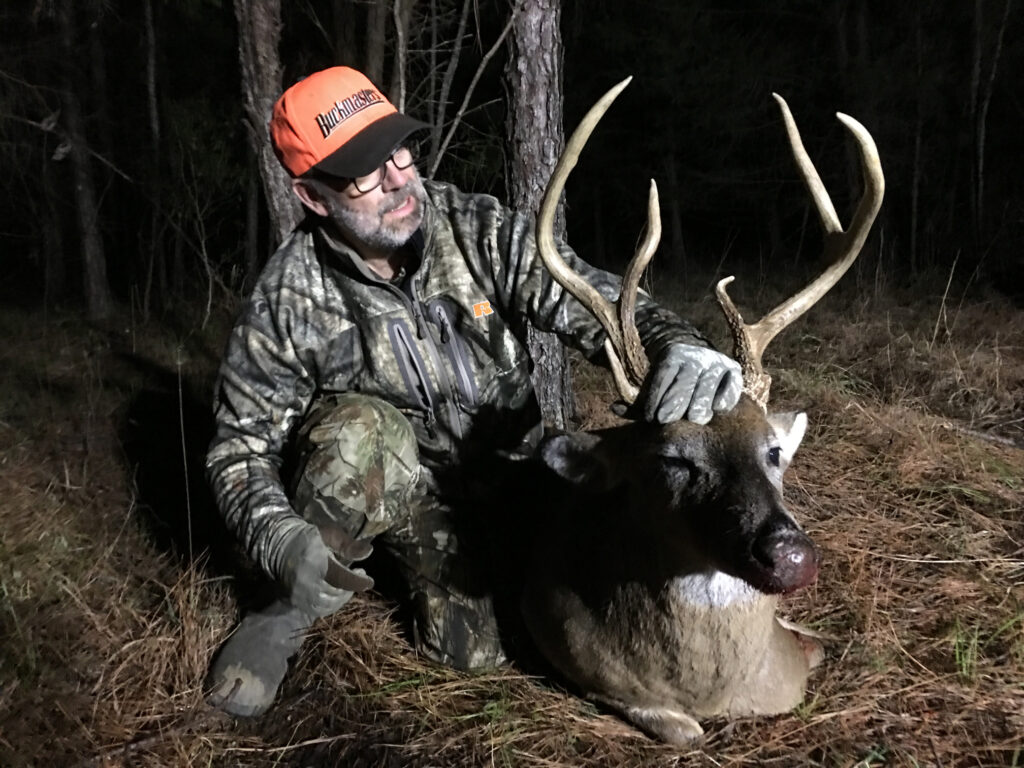An investigation into this phenomenon in whitetail deer.
Different hunts offer different expectations and opportunities and when a modest buck entered my shooting lane after several very slow days of hunting I quickly three upright points on his left beam and made the decision to shoot. It was not until I later walked up on the deer that I realized its right side was a single spike. It happens occasionally.
Faced with somewhat similar circumstances the next day on another rack buck, this one approaching from my left, I made a similar decision, and a similar discovery. His right antler had three upright points and his left was a single spike. Two deer in two days, each with a spike on one side had to be more than mere coincidence.
All the same I passed it off until sometime later when I bumped into Mississippi Department of Wildlife, Fisheries, & Parks deer biologist William McKinley at a conference and asked him about it. He didn’t have an answer, but directed me to someone who might. At the time, Gabriel Karns was exploring the phenomenon of “spike-on-one-side” (SOS or SOOS) bucks at Auburn University. Karns was trying to determine whether they reflected inferior genetics, and thus should be considered cull bucks, or there was something else involved.

From a sample size of 71 SOS bucks, he was able to assign “probable cause” to 44. Of those, 34 resulted from some type of pedicel or skull trauma (most likely from fighting). Any damage to the pedicel, including antlers that fail to cleanly separate when shed can negatively affect, can negatively affect future antler development.
It is fairly common for deer that suffer some type of skeletal injury, particularly to the leg,
to have a malformed antler, usually on the opposite side, a phenomenon I’ve encountered on several occasions. Unfortunately, because Karns’ samples only included the head, he wasn’t able to determine if the SOS was a result of skeletal injury or old gunshot wounds. However, given that males rarely engage in serious fights as fawns, and based on data from other studies, Karns concluded that skeletal injury was the most likely cause.
There may be other contributing factors but genetics didn’t seem to be a significant one. Even if it was, there’s not much you could do about it in a free range herd. Given that, and well documented research that shows antler deformities due to skeletal injuries progressively disappear with each subsequent antler growth cycle, Karns discouraged the notion of harvesting yearling SOS bucks merely as culls.
I offer one more possibility, though it’s largely speculation based on observation. After 30 years of observing deer in the same local herd I have noticed a higher incidence of SOS or asymmetrical racks in yearling bucks after a mild winter. Could it be that these yearlings, who experienced milder winter conditions are just getting a little ahead of themselves in growing their first rack? Maybe they would merely have been spikes after a normal or more severe winter, and given time might even sport larger racks. We don’t know, but that’s why we keep looking for answers.
Bob Humphrey is a certified wildlife biologist and registered Maine guide who has worked with and hunted deer across North America. See more of his writings at www.bobhumphrey.com.
Join our weekly newsletter or subscribe to GameKeepers Magazine.
Your source for information, equipment, know-how, deals and discounts to help you get the most from every hard-earned moment in the field.








